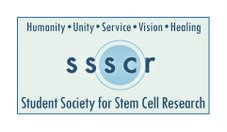Stem cell discovery sheds light on placenta development
GAINESVILLE, Fla. — Researchers studying embryonic stem cells have
explored the first fork in the developmental road, getting a new look
at what happens when fertilized eggs differentiate to build either an
embryo or a placenta.
By manipulating a specific gene in a mouse blastocyst — the structure
that develops from a fertilized egg but is not yet an actual embryo —
scientists with the University of Florida's McKnight Brain Institute
and the Harvard Stem Cell Institute caused cells destined to build an
embryo to instead change direction and build the cell mass that leads
to the placenta.
Writing in today's (Monday, June 9) online edition of Nature
Genetics, the scientists reveal a cellular signaling mechanism in
place at the earliest developmental stage.
Understanding the conditions that cause these cells to go off to
different fates may have a bearing on health problems such as ectopic
pregnancy, which occurs when the embryo develops outside of the womb
in about 1 of 60 pregnancies, or molar pregnancy, which is abnormal
tissue growth within the uterus that affects about 1 in every 1,000
pregnancies.
"We originally were exploring factors that might cause embryonic stem
cells to become malignant — there is a concern that these cells may
cause tumors," said Chi-Wei Lu, Ph.D., an associate neuroscientist at
the UF College of Medicine and lead author of the study. "Our
experiments led us to discover the signal that initiates the process
of embryonic tissue differentiation.
By activating a gene called Ras in cells bathed in a very specific
culture medium, scientists were able to cause embryonic stem cells —
which originate from the inner cell mass of the blastocyst — to
become more like the trophoblastic stem cells that give rise to the
placenta from the outer portion of the blastocyst.
Researchers marked these newly minted cells, which they called ES-TS
cells, and injected them into mouse embryos. Instead of joining the
stem cells that build the embryo, ES-TS cells joined the stem cells
that build the placenta. Furthermore, when scientists transferred the
engineered mouse embryos to foster mothers, the ES-TS cells went to
work exclusively laying the foundation for the placenta.
"This paper highlights the value of embryonic stem cells for
understanding early development,
M.D., Ph.D., an associate professor of biological chemistry and
molecular pharmacology at Harvard Medical School and an associate
professor of pediatrics at Children's Hospital Boston. "Embryonic
stem cells are more plastic than we had thought. By simply activating
the Ras gene, we changed the fate of embryonic stem cells to an
entirely unexpected tissue — the placenta. This surprising result has
given us an unanticipated insight into early embryo development.
The technique of genetically modifying the cells and growing them in
a special medium could be valuable for additional research.
"This is exciting because events that only occur in the early stages
of embryonic development are very difficult to study," Lu said. "Just
a few models exist, and even in mice, only a limited amount of
embryos can be harvested. Now we can culture these cells and have
unlimited material to study."
Researchers are only beginning to understand the natural chemical
environments that allow for production of different tissues.
"What is nice is that what she has observed in cultures appears to be
quite similar to what goes on in early development in animals," said
R. Michael Roberts, D.Phil., a professor of molecular biology at the
C.S. Bond Life Sciences Center at the University of Missouri-Columbia
who did not participate in the research. "Normally, mouse embryonic
stem cells aren't easily converted along the pathway to form
placental cells, while human embryonic stem cells undergo this
transition quite easily. This has always been a puzzle. What she has
shown is you can make mouse embryonic stem cells convert
unidirectionally to trophoblasts by activating a single gene. This is
very helpful for understanding how the placenta develops."
###
Public release date: 9-Jun-2008
Contact: John Pastor
jdpastor@ufl.
352-273-5815
University of Florida
http://www.eurekale
«¤»¥«¤»§«¤»¥«¤»§«¤»¥«¤»«¤»¥«¤»§«¤»¥«¤»§«¤»¥«
¯¯¯¯¯¯¯¯¯¯¯¯¯¯¯¯¯¯¯¯¯¯¯¯¯¯¯¯¯¯¯¯¯¯¯¯¯¯¯¯¯¯¯¯
StemCells subscribers may also be interested in these sites:
Children's Neurobiological Solutions
http://www.CNSfoundation.org/
Cord Blood Registry
http://www.CordBlood.com/at.cgi?a=150123
The CNS Healing Group
http://groups.yahoo.com/group/CNS_Healing
____________________________________________
«¤»¥«¤»§«¤»¥«¤»§«¤»¥«¤»«¤»¥«¤»§«¤»¥«¤»§«¤»¥«
¯¯¯¯¯¯¯¯¯¯¯¯¯¯¯¯¯¯¯¯¯¯¯¯¯¯¯¯¯¯¯¯¯¯¯¯¯¯¯¯¯¯¯¯
Change settings via the Web (Yahoo! ID required)
Change settings via email: Switch delivery to Daily Digest | Switch format to Traditional
Visit Your Group | Yahoo! Groups Terms of Use | Unsubscribe
__,_._,___










